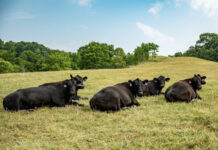It was more a wavering non-waiver than another government oldie-but-goodie, a non-denial denial.
Still, nothing in the Environmental Protection Agency’s Dec. 1 delay to grant the ethanol industry’s request to boost the current 10 percent ethanol limit in gasoline to 15 percent suggested it won’t happen — and soon.
“It is vitally important that the country increase the use of renewable fuels,” began the Nov. 30 letter from EPA’s Assistant Administrator Gina McCarthy denying the request. (http://www.epa.gov/otaq/regs/fuels/additive/lettertogrowthenergy11-30-09.pdf)
After all, “… a common theme we’ve heard” in the 14,148 public comments on the 50 percent rise in the “blend wall,” she went on, is “that the federal government and other stakeholders are looking to have a successful, long-term introduction of more renewable fuels into the transportation sector.”
In short, McCarthy added, after the EPA completes some more “necessary science to make the right decision … we should be in position to approve E15 for 2001 and newer vehicles in the mid-year (2010) time frame.”
Too subtle?
If that clear peek at EPA’s tea leaves was too subtle, U.S. Secretary of Agriculture Tom Vilsack quickly jumped up to read ’em for the politically-impaired.
“This commitment,” Vilsack tut-tutted in a press release shortly after the EPA non-announcement announcement, “reflects the Obama administration’s support for a strong biofuels industry helping to increase income for farmers and jobs in rural America.”
One of the many things done by EPA in not doing anything is the reaffirmation of a lesson your mother tried to teach you long ago: If you don’t ask, you’ll never know.
Growth Energy, the new Washington ethanol powerhouse, asked for the blend wall to be raised last March before the newly-arrived Obama administration even knew where most walls in Washington were.
And, smartly, the consortium of ethanol makers, commodity groups and industry players tied the request to the politically salable idea that the bigger blend would quickly deliver $13.3 billion in new plant construction, 12,000 new construction jobs and $24.3 billion in mostly rural, primary and secondary spending.
Political savvy
That jobs first-ethanol second approach reflects the political savvy of the barely year-old Growth Energy. Co-chairmen are ethanol executive Jeff Broin and former presidential candidate, retired Army general Wesley Clark. Its CEO is long-time Senate ag staffer and, until last spring, National Farmers Union President Tom Buis.
The group’s broad rural base and swift, almost undeniable request of EPA also represents a shift in the old biofuel game. Big Agbiz — Cargill, ADM, et. al. — aren’t the only ethanol gorillas on Capitol Hill anymore; they’ve got company, the more democratic and more Democratic Growth Energy.
And, too, no longer will biofuels have a face composed mostly of corn. Indeed, for the new, 36 billion gallons renewable fuels mandate to be met by 2022, argued Growth in its bigger blend request, biofuel feedstocks must come in all forms — grass, cobs, algae, wood chips, whatever — and all colors.
Those colors, Growth cleverly repeated, were pretty much red, white and blue.
Wasn’t new
It wasn’t new to wrap the request in the flag; wrapping it tightly to green jobs in flag-waving America, however, was. From the start, the push was designed to hand the Obama white house a freebie: new jobs, new investment, new homegrown fuels, more greenness and a fast, clean way to fulfill a campaign promise without having to go hat-in-hand to that bothersome bunch on Capitol Hill.
Think home run without leaving home or running.
Ethanol critics, however, see raising the blend wall as pouring gasoline on an already unsustainable fire — food versus fuel, poor versus rich, consumption versus conservation.
But, friend or foe, EPA’s wavering non-waiver means the blend boost is all but a done deal. Take it to the (non-bank) bank.













